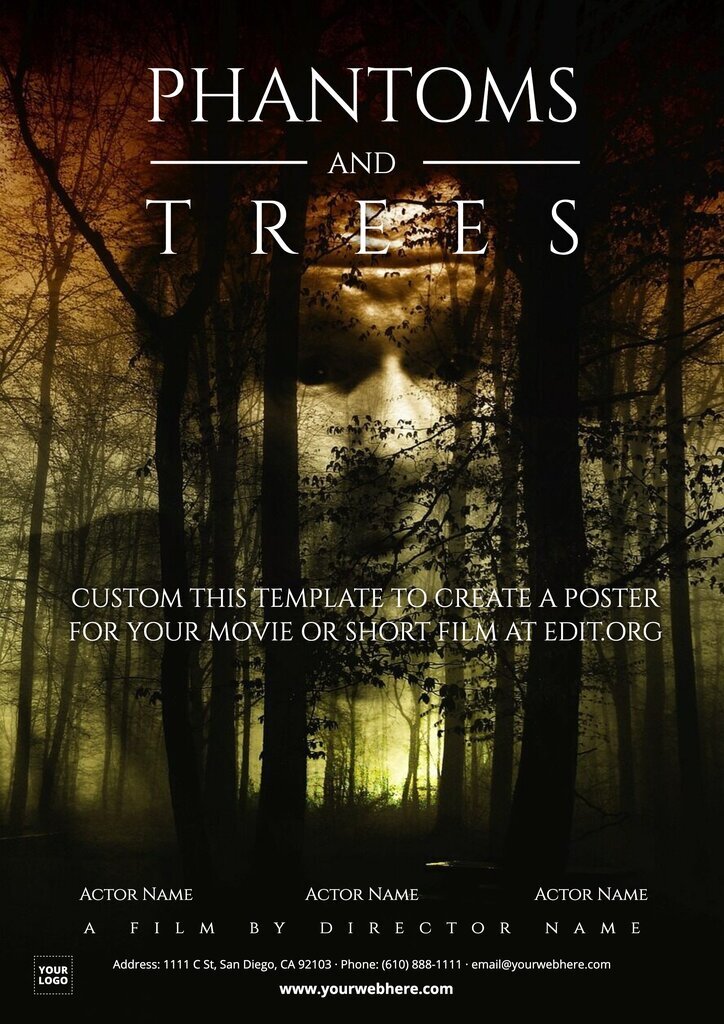Reel Artistry: Unleashing AI Magic in Movie Poster Design
Reel Artistry: Unleashing AI Magic in Movie Poster Design
Blog Article

In the ever-evolving world of cinema, the visual appeal of a movie poster plays a crucial role in capturing the audience's attention. A well-crafted poster can evoke emotions, spark curiosity, and draw viewers into the film's universe long before they step into the theater. With technology advancing at a breathtaking pace, the creative landscape of movie marketing has begun to shift dramatically. One of the most groundbreaking innovations in this realm is the emergence of AI movie poster generators, tools that harness the power of artificial intelligence to create stunning visual designs.
These AI-driven generators are redefining the artistic process behind poster creation, allowing filmmakers and marketers to explore a plethora of styles, themes, and concepts with unprecedented ease. By simply inputting a few details about the film, such as its genre, key characters, and mood, users can generate a range of unique and captivating poster designs. This fusion of technology and creativity not only saves time and resources but also offers an exciting new avenue for artistic expression in the film industry, making the magic of movie poster design more accessible than ever before.
The Evolution of Movie Posters
The journey of movie posters began in the late 19th century when films first emerged as a form of entertainment. Early posters were simple, often featuring hand-drawn illustrations or photographs of the actors. These designs focused primarily on capturing the essence of the film, with limited resources and artistic techniques available. As the film industry grew, so did the importance of visually appealing posters to attract audiences.
In the mid-20th century, the advent of printing technologies transformed poster design. Artists began to experiment with composition, color schemes, and typography, leading to bold, eye-catching designs. Iconic elements such as dramatic imagery and stylized fonts became essential in conveying the genre and tone of the film. This era saw the rise of renowned graphic designers, whose work helped shape the visual identity of movies and left a lasting impact on pop culture.
With the rise of digital technology in the 21st century, the landscape of movie poster design entered a new phase. Graphic design software allowed for unprecedented creativity, enabling artists to blend photography, illustrations, and 3D rendering into captivating visuals. The introduction of AI movie poster generators further revolutionized the industry, providing filmmakers and marketers with innovative tools to create unique and engaging posters quickly. This evolution continues to redefine how films are marketed, reflecting changing tastes and technological advancements.
How AI Transforms Poster Creation
The emergence of AI movie poster generators has revolutionized the way filmmakers and marketing teams approach poster design. Traditional methods often involve a lengthy process that requires multiple iterations and collaboration among artists, graphic designers, and marketing specialists. With AI technology, this process is streamlined, allowing for rapid concept generation based on input parameters such as genre, mood, and visual style. This efficiency enables creators to explore a broader range of ideas in a shorter timeframe, which can lead to more innovative and captivating designs.
AI algorithms analyze vast datasets of existing movie posters to identify patterns and trends that resonate with audiences. By leveraging deep learning and image recognition, these systems can propose designs that incorporate popular elements while also introducing unique twists. Users can customize aspects like color schemes, typography, and imagery to suit their specific vision. This not only enhances creativity but also provides valuable insights into what makes a compelling poster, helping creators make informed decisions.
As AI continues to evolve, the possibilities for movie poster creation become more exciting. With advancements in machine learning, future generators may begin to understand the emotional impact of visuals and tailor designs to evoke specific feelings in viewers. This level of sophistication could lead to posters that not only attract attention but also resonate on a deeper level, aligning perfectly with the film's narrative and themes. Ultimately, AI is not just a tool for efficiency; it is a partner in the creative process, pushing the boundaries of what is possible in poster design.
Future Trends in AI-Generated Artwork
As technology continues to evolve, the capabilities of AI movie poster generators are set to expand dramatically. One anticipated trend is the increased personalization of designs. Filmmakers and studios may turn to AI to create posters that resonate with specific audience demographics. By analyzing data related to viewer preferences, AI tools can craft unique imagery that captures the essence of a film while appealing to targeted groups, enhancing engagement and interest.
Get The Best Price
Another exciting direction for AI-generated artwork is the integration of real-time collaboration features. Imagine a platform where artists can interact with AI in real-time, tweaking designs as they go along. This symbiotic relationship between human creativity and machine efficiency could lead to innovative poster designs that combine the strengths of both. The ability to instantly see variations and adaptations will empower artists to push their creative boundaries further than ever before.
Finally, the emergence of more sophisticated AI algorithms may lead to an increased focus on storytelling through visual elements in movie posters. Future AI generators might not only replicate styles but also understand the narrative essence of a film, translating complex themes and emotions into visual metaphors. This level of understanding will help create posters that do more than capture attention; they will communicate the film's story in a compelling way, fundamentally changing how audiences perceive movie marketing.
Report this page